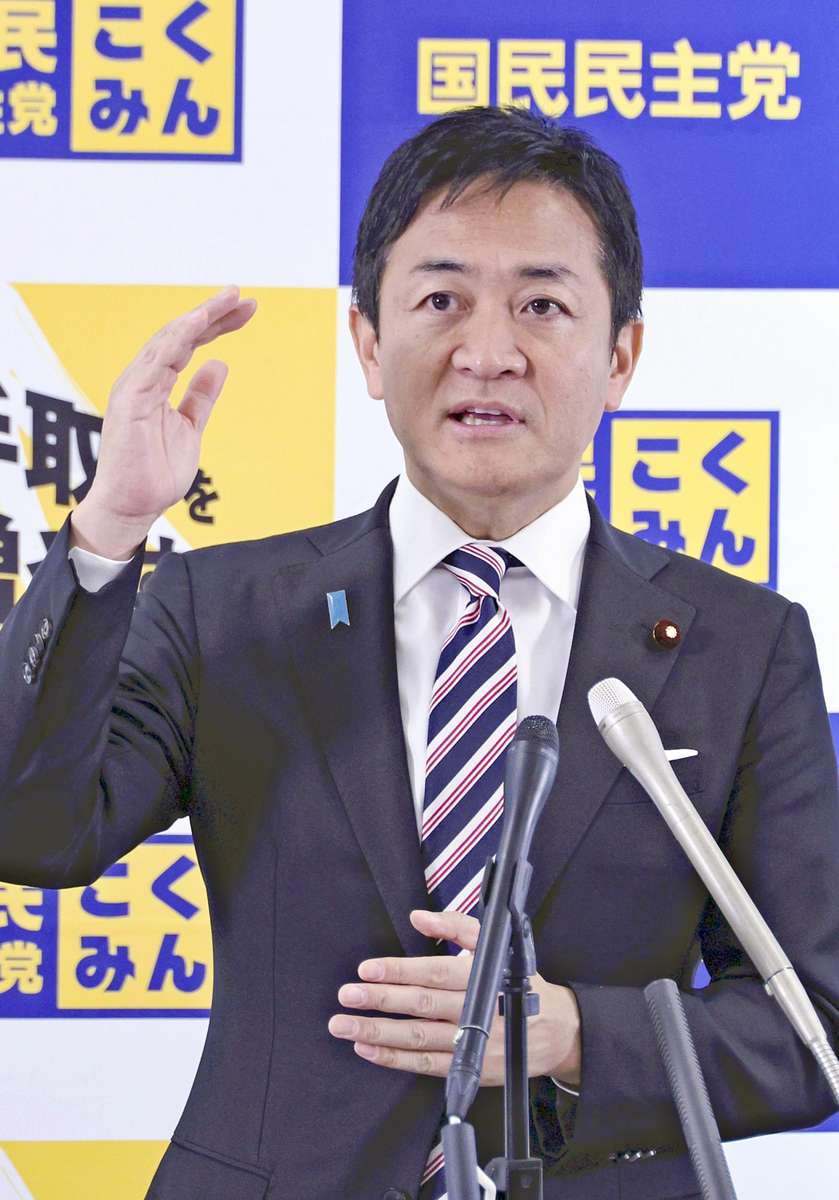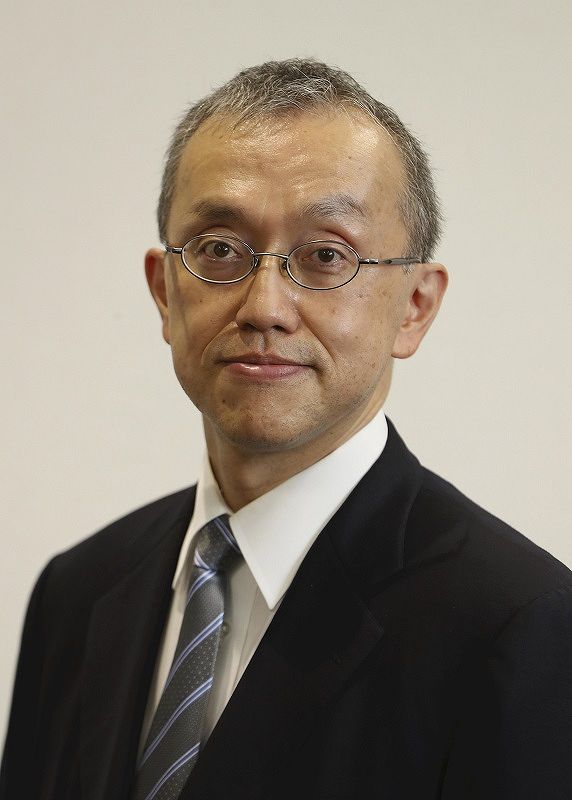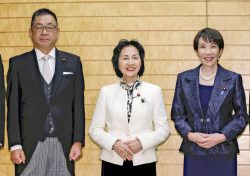LDP’s Minority Govt Sets Stage For ‘3rd Pole Era’; Political History Suggests Instability Will Result

Democratic Party for the People leader Yuichiro Tamaki holds a press conference on Nov. 19 at the Diet.
8:00 JST, November 30, 2024
The political scene has undergone drastic change after the defeat of the ruling Liberal Democratic Party in October’s House of Representatives election. Although LDP President Shigeru Ishiba was reelected as prime minister and the Constitutional Democratic Party of Japan led by Yoshihiko Noda increased its seats by half, it has been neither Ishiba nor Noda but the leader of the Democratic Party for the People, Yuichiro Tamaki, who has come into the limelight.
Not a day passes without his name being printed in newspapers and magazines or his face being seen on TV news programs, regardless of whether the news is good or bad. His name appeared in The Yomiuri Shimbun more than 90 times in the month after election day. This is about five times as many appearances as after the previous general election in 2021.
As the Ishiba administration is now a minority government, it cannot pass budgets and bills without help from the opposition. This situation is called a “hung parliament.” It usually means that policy implementation is delayed and falls into disarray.
As the leading opposition party, the CDPJ will compete with the LDP for control of the reins of government and will hesitate to help the ruling administration achieve its goals. This situation enables the DPFP to be a game changer that can break any stalemate because it has enough seats to help the ruling bloc — the LDP and its partner Komeito — reach the number it needs to pass legislation. As Tamaki has reiterated, he can push forward his party’s agenda through deals with the LDP. And he can get the best bargain for his party without any of the responsibility that the ruling parties must bear.
The DPFP has claimed that low-income people feel overtaxed, and Tamaki seeks to review the annual income threshold above which people must pay income tax. The issue of what to do with the minimum taxable income limit had been left untouched for decades. The DPFP has begun policy-by-policy discussions with the LDP and Komeito.
Another potential game changer is the Japan Innovation Party. The JIP has enough seats to exercise a deciding vote as well. The DPFP and the JIP are regarded as center-right and have almost the same basic policies on diplomacy, national security, and revision of the Constitution that the LDP has.
Parties like the DPFP and the JIP have been called the “daisankyoku,” or third pole. This is a metaphorical term for a political force outside the largest and the second largest parties.
This is not the first time that a third pole has played a significant role in Japanese politics. The earliest roots of the daisankyoku phenomenon can be traced back to the foundation in 1960 of the now-defunct Democratic Socialist Party, which was supported by private sector unions and was one of the ancestral parties of the DPFP. In 1964 Komeito was established by the influential religious organization Soka Gakkai as a centrist party. These two parties sometimes cooperated with the LDP on a policy-by-policy basis until 1993. At that time, the LDP was defeated in the general election and kicked out of power owing to its “politics and money” issues and its reluctance to tackle political reform, which resembles the recent situation.
In 1993, even though the Japan New Party, headed by Morihiro Hosokawa, and the New Party Sakigake — whose name means pioneer or harbinger — were small minorities, the two parties became the core of a non-LDP administration and led the election reform that brought about the current single-seat constituency system.
In parliamentary democracies, it sometimes happens that no party secures a majority of legislative seats. In Europe, a grand coalition is sometimes the preferred option for resolving the situation. Germany, Italy and Austria have all formed grand coalitions in the past quarter century.
In Japan, there have been some attempts at grand coalitions, but they have failed time and again. Instead, third-pole parties have played a key role in enabling the ruling administration to handle a chaotic Diet.
Why has this happened? I suppose it is because there have been huge policy gaps between the LDP and the second largest party. Over the decades during which the dominant LDP has almost continuously held power, successive leading opposition parties, which changed from the Japan Socialist Party to the Democratic Party to the CDPJ, have almost all been center-left. They have differed considerably from the LDP not only on diplomatic and defense policies but also on energy policies regarding nuclear power plants and their basic stances on social issues such as same-sex marriage. So, the hurdles to forming a grand coalition were too high.
However, it has not been easy for the ruling administration to cooperate with the third pole. One problem is the durability of third-pole parties. In Germany, the Green Party has a long history of distinguishing itself from the two leading parties. The same goes for the Liberal Democrats of the United Kingdom. But Japanese third-pole parties have been reorganized or disbanded repeatedly and cannot last long unless they have a strong support base, or a strong leader.
Another problem is that the third pole tends to advocate populist policies such as cutting taxes or increasing subsidies as a shortcut method to appeal to voters. If the ruling party concedes to their demands too easily, it results in a fiscal crisis. Many third-pole parties, including the DPFP, have been dependent on the popularity of a charismatic leader. In the case of the downfall of the leader, the party may suffer the same fate.
The ruling administration and the opposition will continue their tug-of-war over partisan interests. No one knows what will happen next. But it is certain that unless the ruling administration or even the opposition forms a new coalition and gains a stable majority, uncertainty in Japanese politics will linger for months or years.
Political Pulse appears every Saturday.

Takayuki Tanaka
Takayuki Tanaka is the president of The Yomiuri Shimbun, Osaka. His previous posts included managing editor of The Yomiuri Shimbun, Tokyo.
"Editorial & Columns" POPULAR ARTICLE
-

Violations of Subcontract Law: Major Automakers Must Eliminate Old Practices
-

Local Governments’ Tax Revenues: Devise Ways to Correct Imbalances in Tax Sources
-

Heavy Rains in Asia: Support for Victims, Flood-Control Measures Urgently Needed
-

5 Japanese Business Dinner Mistakes to Avoid — and What They Taught Me About Business in Japan
-

New Nuclear Threat: China Seeking to Follow U.S., Russia in Military Expansion
JN ACCESS RANKING
-

Keidanren Chairman Yoshinobu Tsutsui Visits Kashiwazaki-Kariwa Nuclear Power Plant; Inspects New Emergency Safety System
-

Imports of Rare Earths from China Facing Delays, May Be Caused by Deterioration of Japan-China Relations
-

University of Tokyo Professor Discusses Japanese Economic Security in Interview Ahead of Forum
-

Japan Pulls out of Vietnam Nuclear Project, Complicating Hanoi’s Power Plans
-

Govt Aims to Expand NISA Program Lineup, Abolish Age Restriction
























